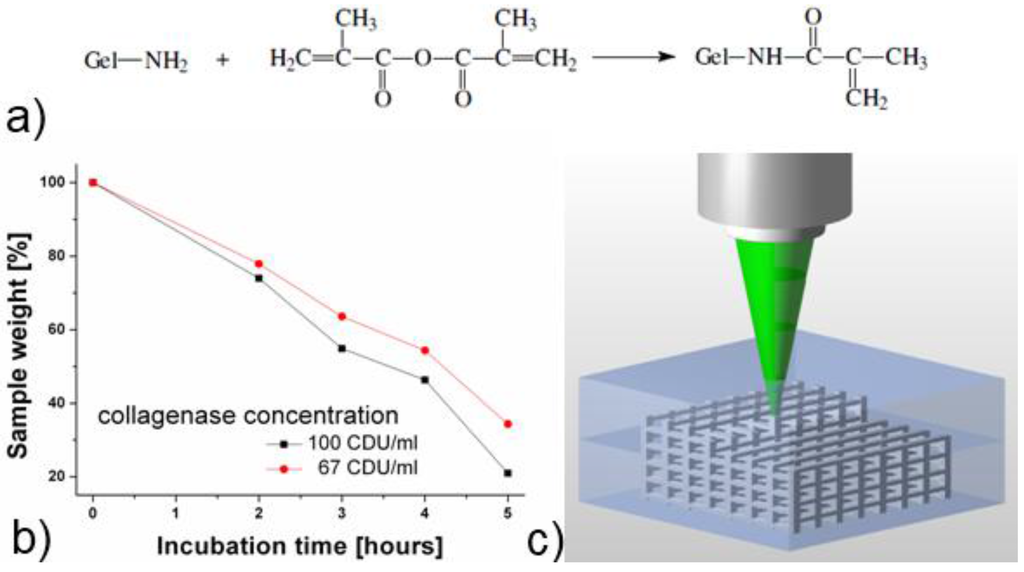
"The human heart actually has multiple layers of helically aligned muscles with different angles of alignment," said Huibin Chang, a postdoctoral fellow at SEAS and co-first author of the paper. The alignment of the fibers can be tuned by changing the angle of the collector. The team found that by angling and rotating the collector, the fibers in the stream would align and twist around the collector as it spun, mimicking the helical structure of heart muscles. Then, a focused airstream controls the orientation of the fiber as they are deposited on a collector. As the solution leaves the reservoir, the solvent evaporates, and the polymers solidify to form fibers. The first step of FRJS works like a cotton candy machine - a liquid polymer solution is loaded into a reservoir and pushed out through a tiny opening by centrifugal force as the device spins. To test Sallin's theory, the SEAS researchers used the FRJS system to control the alignment of spun fibers on which they could grow cardiac cells.

"Our goal was to build a model where we could test Sallin's hypothesis and study the relative importance of the heart's helical structure," said John Zimmerman, a postdoctoral fellow at SEAS and co-first author of the paper. In 1969, Edward Sallin, former chair of the Department of Biomathematics at the University of Alabama Birmingham Medical School, argued that the heart's helical alignment is critical to achieving large ejection fractions - the percentage of how much blood the ventricle pumps with each contraction.

Over the next three centuries, physicians and scientists have built a more comprehensive understanding of the heart's structure but the purpose of those spiraling muscles has remained frustratingly hard to study. In 1669, English physician Richard Lower - a man who counted John Locke among his colleagues and King Charles II among his patients - first noted the spiral-like arrangement of heart muscles in his seminal work Tractatus de Corde. This work has its roots in a centuries old mystery. "This work is a major step forward for organ biofabrication and brings us closer to our ultimate goal of building a human heart for transplant," said Parker, the Tarr Family Professor of Bioengineering and Applied Physics at SEAS and senior author of the paper. Developed at SEAS by Kit Parker's Disease Biophysics Group, FRJS fibers direct cell alignment, allowing for the formation of controlled tissue engineered structures. This advancement was made possible using a new method of additive textile manufacturing, Focused Rotary Jet Spinning (FRJS), which enabled the high-throughput fabrication of helically aligned fibers with diameters ranging from several micrometers to hundreds of nanometers. Paulson School of Engineering and Applied Sciences (SEAS) have developed the first biohybrid model of human ventricles with helically aligned beating cardiac cells, and have shown that muscle alignment does, in fact, dramatically increases how much blood the ventricle can pump with each contraction.Īlso Read | Nairobi Fly A Serious Health Threat in Bihar's Seemanchal Region. The scaffolds are 3D printed, maintaining structural and function compatibility with human tissues, ranging from soft tissues to bone, which are the most commonly transplanted tissues, according to IISc.In the past, 3D printing using UV light has been applied to make the scaffold.Although this method can be used to print complex models at a high resolution, it uses UV light, which is known to cause DNA damage in cells during printing, according to IISc.Kaushik Chatterjee, an associate professor in the department of materials engineering, and his team addressed this issue by using visible blue light radiation.Īccording to the IISc, they have used this technique to make tissue scaffolds out of proteins and polysaccharides in two recent studies.Now, bioengineers from the Harvard John A. BENGALURU: Scientists at the Indian Institute of Science have devised a lab-based approach that has the ability to change the way organ transplantation is done.Although organs that have been damaged by disease or injury can be replaced with healthy organs from donors by transplantation, there are risks associated with infection, a shortage of donated organs, and the likelihood of rejection by the recipients immune system.The development of 3D printing techniques in recent years has allowed tissue engineers to produce complex parts layer after layer, according to IISc.The emphasis of tissue engineering has been on tissue and organ regeneration by creating scaffolds made of biomaterials called bio-inks.


 0 kommentar(er)
0 kommentar(er)
